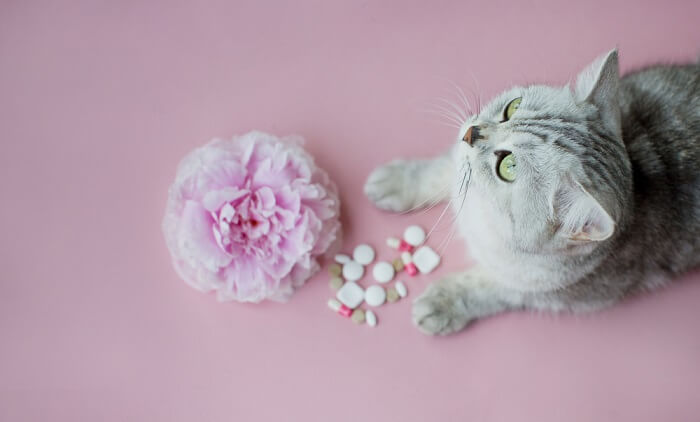
Amlodipine is a common medication used to treat hypertension (high blood pressure) in cats. In this article you’ll learn about amlodipine, how it works, side effects to watch out for, and some frequently asked questions.
Amlodipine For Cats Overview

About Amlodipine for Cats
Amlodipine is a calcium-channel blocker, a type of medication used to control high blood pressure. It is a common first-line drug of choice for treating cats that have high blood pressure.
High blood pressure in a cat is considered to be a medical issue if a systolic blood pressure measurement greater than 160mmHg is repeatedly obtained. A single elevated measurement in conjunction with signs including sudden blindness, collapse, disorientation, seizure-like episodes, weakness, or paralysis also suggests the need for treatment.
What Does Amlodipine Do for Cats?
Amlodipine is a dihydropyridine calcium channel blocker. Calcium channels are ion channels within cells that selectively allow calcium ions. They are present in the cells of most mammals and have a variety of functions within cells, including transmitting signals between cells and the contraction of the muscle.
When amlodipine blocks calcium channels in the smooth muscle of blood vessels, it allows for the blood vessels to dilate, which decreases blood pressure.
Side Effects of Amlodipine for Cats
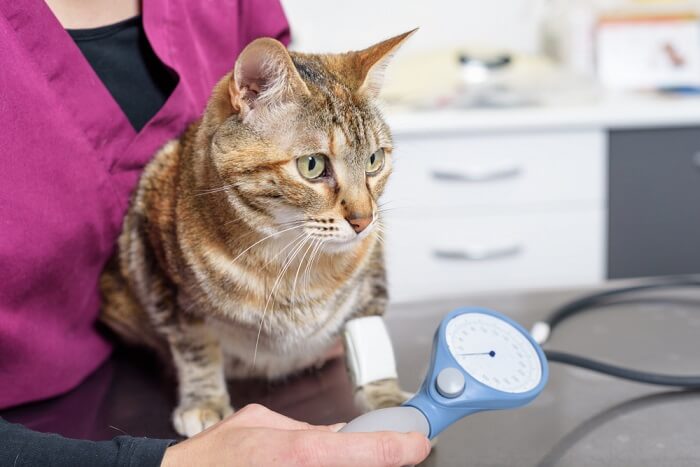
Underlying chronic kidney disease can sometimes be a cause of elevated blood pressure and it’s a common practice in these cases to add in a second blood pressure medication.
As with any blood pressure medication which acts to lower blood pressure, lowering it too much, which is called hypotension, is a chief potential side effect. This is why it’s always best to only use amlodipine when and as prescribed by your kitty’s veterinarian.
This is also why it’s very important to keep appointments for rechecking blood pressure at your vet’s office after any changes to a blood pressure medication dosage.
Some digestive upset signs like vomiting, diarrhea, and decreased appetite are uncommonly seen. When related to the medication, these side effects are usually mild and transient.
Amlodipine is extensively metabolized by the liver, and so should be used cautiously in any cats with a medical history of liver disease. It should also be used carefully for cats being treated for heart failure.
Underlying chronic kidney disease can sometimes be a cause of elevated blood pressure. There can be some concern when amlodipine is used on its own when the kidney disease is present that it could put a greater strain on the filtration system of the kidneys. It can be common in these cases to add in a second blood pressure medication.
Some remaining infrequent side effects include elevation of kidney values (independent of known pre-existing kidney disease), low potassium, and weight loss. Gum inflammation has apparently been reported but is considered exceedingly rare.
Amlodipine for Cats Dosage
Amlodipine should only be started under the care of a veterinarian based on documented elevated blood pressure readings, sometimes in conjunction with signs and symptoms of hypertension. The dosage for amlodipine is typically started at ¼ of a 2.5mg tablet once a day.
Adjustments to the dose of amlodipine are only made based on recheck blood pressure measurements at the vet, to ensure that the dosage is catered to the individual needs of your cat.
It can be common to add in a second blood pressure medication if high blood pressure cannot be fully controlled on amlodipine alone.
Conclusion
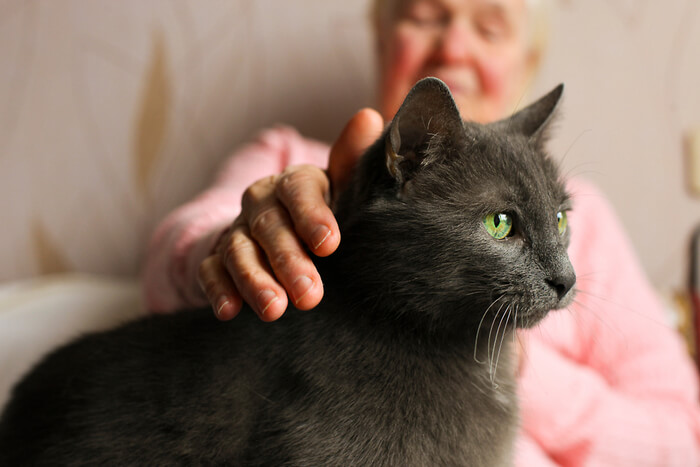
Your cat’s blood pressure is influenced by multiple factors, including the heart and blood vessels, along with a complex regulatory system across the entire body.
Amlodipine is a common, first-line choice for a majority of cats suffering from high blood pressure, which can be secondary to a few different disease processes.
It’s always important to only use a blood pressure medication if hypertension and/or related signs of it have been accurately documented. If you feel your cat is exhibiting signs of hypertension and may benefit from a blood pressure medication, make sure to speak with your vet first.
Drug Dosing Disclaimer: We are only able to provide doses for medications that are FDA approved for use in cats and only as the label guidelines dictate. For medications that are used off-label we can only provide guidelines and safety information for use. Safe and appropriate dosing for off-label medications can only be determined by a primary care veterinarian.
We encourage you to work with your veterinarian to determine if a particular medication is appropriate for your cat. Changing or adjusting a dose for your cat on your own without consulting with a veterinarian can carry risk. We do not encourage use of medications prescribed for human use in pets without first consulting with a primary care veterinarian.
Frequently Asked Questions
How Quickly Does Amlodipine Work in Cats?
In cats, effects on systemic blood pressure can be seen within 4 hours of it being given. It typically remains effective for about 30 hours, allowing for just once daily dosing.
Is Amlodipine Safe for Cats?
While it should be used cautiously in certain cases, a majority of cats with high blood pressure do tolerate amlodipine well.
Because it can take a couple of hours for effects to be seen, sudden, acute side effects in cats after a single dose are uncommon.
What are the Symptoms of High Blood Pressure in Cats?
The symptoms or clinical signs of feline hypertension can include but are not limited to sudden blindness, collapse, disorientation, seizure-like episodes, weakness, or paralysis. Keep in mind that these signs are not specific for high blood pressure and can be seen with other diseases too.
If your kitty is suffering from any of these signs, it’s always best to have your furry friend examined by your vet to determine what the underlying cause is and what treatment is best.
Can a Cat Overdose on Amlodipine?
Overdoses of blood pressure medications like amlodipine are possible, which can lead to blood pressure being too low. This happens most often when an additional dose is given at home by accident. This is why it’s very important to have a designated person at home responsible for giving medications to your cat. If multiple family members are involved in administering medications, make sure to keep a schedule or communicate effectively.
Overdoses can also occur if tablets spill out of the bottle and a kitty ingests multiple doses at a time. Always make sure to keep medications in a secure location.
If you have concern your cat may be experiencing an overdose on amlodipine or any other prescription medication, always be sure to contact ASPCA Animal Poison Control (1-888-426-4435) or the Pet Poison Helpline (1-855-764-7661). A fee does apply, but your vet will often need the toxicologist's advice to help develop a treatment plan for your cat.
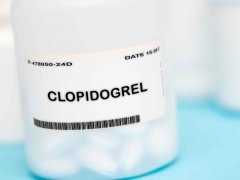

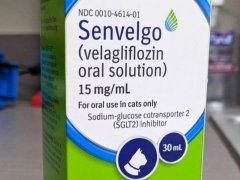
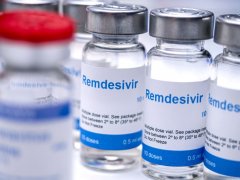

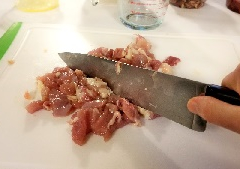

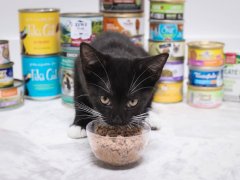
My VET just started my 15yr old Maine Coon on amlodipine 2.5mg/ 1/4 tab. BUT! she also has arthritis, and instead of a prescribed medication (gabapentin, which knocked her out), I told the VET I put her on Antinol. Do these two conflict with each other? Don’t want my kitty sick from all these meds/supplements. And I wanted her to drink more so I bought Purina Hydra (gravy) to stimulate her drinking. Again will these combo’s make her sick?
Hi Liddy,
There is no known interaction between amlodipine and the ingredients in Antinol, which are green-lipped mussel and krill oil, which are primarily sources of omega fatty acids. Supplements like Antinol are generally safe to use along with many medications. I would also not see interactions with the Purina Hydra Care. The main interactions with amlodpine will be other medications that affect or alter blood pressure.
Dr Vanderhoof,
Thank you ever so much for replying so quickly. I’m off to WM to get her meds.
I am always appreciative of a second opinion from another VET.
FYI: Before I knew my kitty had high BP. Her pupils started to dilate, now they are in a state of full dilation, except for a moment here and there. But they are never slits anymore. She also has been rubbing her eyes ever since. Is this from high BP?
Hi Liddy, the dilated pupils are not specific for hypertension but certainly can be seen with it. It’s always important to check vision status with hypertensive cats, because we can sometimes see vision loss related to persistent high blood pressure. But they can also just be dilated from elevated BP itself, which should improve if BP is better controlled.
Hi circling back from my comment on the 2/17 about my cats sudden blindness. They ended upping his amlodopine dosage to 1/2 pill every 12 hours and he was actually doing great even regained 80-90% vision back for over a week. Now this morning woke up and he’s blind again, took him to the emergency vet and his blood pressure is now great with the meds and they said he had no neurological signs of a stroke. Any idea what could cause this?
Hi Jessica, I’m sorry to hear this. It’s hard for me to say. If vision is regained, it is odd for it to be lost again with normal blood pressure, especially after being regained for that length of time. There can be delayed impacts on the retina from detachment as detachment for too long can cause blood perfusion and nutrient loss. It’s also possible the reattachment was only temporary and the retina detached again for some unclear reason. With the blood pressure stabilized, it may be worth consulting with a veterinary ophthalmologist for a second opinion on the blindness. They have better instruments to assess the eye chambers and retina, etc.
Hi my cat has stage 2 kidney disease and all of a sudden lost sight this weekend. We went to the vet and his blood pressure is high, they said to give him 1/4 of the pill every 12 hours but as I read it seems like it should be 24 hours? Is this normal I don’t want to give him too much?
Hi Jessica,
It is true that amlodipine is most often given only once a day. But since this may be considered a hypertensive emergency and your vet is hoping see your cat regain eyesight by more aggressively treating the hypertension, you should check with your vet before making any adjustments. They will want to recheck blood pressure after starting the amlodipine and reassess your cat’s eyesight, likely in just a few more days.
Hello!
My cat was Prescribed half a tablet every 24 hours. However, he has become extremely antsy! He is having a hard time sleeping. He also is having a hard time getting comfortable while trying to sleep. He will try many different positions on the couch and eventually he gives up trying to sleep. He is 17 so obviously this is not normal. Have you seen side effects like this? If so will it go away or should I call my vet?
Thanks!
Hi Shannon,
I can’t say I’ve seen that specifically and restlessness on its own is not a listed side effect of the medication. You would not typically see that with a reflexive low blood pressure and/or heart rate from a dose that’s too high and because amlodpine has a slow onset of action, we don’t often see those effects in cats. We can see restless behavior with high blood pressure, so depending on the circumstances, if your cats blood pressure is still high despite starting amlodipine, this could be what you’re seeing. The other thought is that uncommonly a reflexive tachycardia, or high heart rate, may occur after dosing that could cause restlessness. The only way to know if this is happening is to check a heart rate before and after your cat receives the medication. That might be hard for you to do at home. If your cat has recently started the medication, you should be planning on having a blood pressure rechecked within 2 weeks of starting it. If you do continue to see the behavior, I would advise checking in with your vet to get their opinion.
My 18 year old female cat had been prescribed Amlodipine and I gave her 1 dose and she has been extremely sick for the past 5 days. Throwing up constantly, refuses to eat anything. I’ve gotten her many different brands, treats, soft food, dry food, gravies, etc and she refuses to eat any of it. We’ve been going to the vet regularly this week but no one can figure it out. Have you ever heard of this happening? What can I do to help her get better again?
Hi Madeline, I’m sorry to hear your kitty is having a hard time. Digestive upset can occur with amlodipine though it is usually more mild than what you’re experiencing. If the digestive upset cannot be attributed to another cause, it is likely a situation requiring daily use of anti-nausea medication and appetite stimulant medication with many different food options to get her to eat. Some canned food options that often work well as least for short-term enticement include Fancy Feast and canned tuna. The Hill’s a/d critical care prescription diet that is high in calories is also helpful if your vet carries it. Amlodipine is a usual first go-to for high blood pressure, though there are other choices available if your kitty doesn’t tolerate it well.
Hi My 15 Yr old cat has stage 1 kidney disease just detected by bloods. because my cat has
very high blood pressure. His pupils were not dilating.his vision is fine at the moment. Hence why blood pressure test picked it up.
Prescribed half a amodip daily. However just read your piece on effects if filtration system. Any suggestions?
Also can His pupils close up again?
Hi Kelly,
It’s a bit of a balancing act. If the hypertension is bad, this is the paramount concern compared to early stage kidney disease, and amlodipine is a common first choice. If a starting dose like you described assists enough with the blood pressure, it may be okay with very early stage kidney disease to not be too concerned. However, if kidney disease is more progressive, or if the amlodipine dose needs to be further increased, it can be common to add an ACE inhibitor (like enalapril or benazepril) to the mix which may help to counteract any effects on the kidney’s filtration system.
There’s never a guarantee, but it possible for ocular side effects associated with hypertension to resolve with blood pressure medication, if it’s caught early enough. Good to hear your kitty hasn’t lost vision. Hoping for the best for you both.
Transdermal method of this drug does not work. My cat tolerated it very well, but it was not doing the trick. Not sure why Chewy even sells it, as they agreed when I inquired. Found that putting my cat’s pill half on my finder, coated in Churu creamy treat (by Inaba) is ideal! My cat is 16 and undiagnosed high blood pressure led to both retinas detaching, I had no idea that was a possibility as my vet did not recommend checking her blood pressure until trying to figure out what happened to her eyes. At what age should vets start checking blood pressure? Also wish it was simple like with humans, Cost is close to $50 each time, just for the test. It took many rechecks for the vet to find the best dosage. Thanks for any advice!
Hi Penny,
I have encountered some medications that don’t work great in a transdermal preparation. They may still be offered but the absorption of the drug molecule is sometimes just not great through the skin. I can’t speak to amlodipine specifically, but the best authority will usually be the pharmacist with the compounding pharmacy.
For blood pressure, it’s not necessarily routine to screen blood pressure unless there is a health concern related to blood pressure where we would check it (kidney disease hyperthyroidism, heart disease, vision problems, etc.). Primary hypertension that is not related to another condition that we’re monitoring for with physical exam and labwork is generally uncommon. I don’t think it’s wrong to recommend at least annual screening in senior pets, but there are detractors to it. Our patients tend to be more stressed generally in the doctor’s office than many people, which can make interpretation of higher BP readings difficult sometimes. Checking a BP in a person is fairly simple, but the same process in pets is more stressful for them and more of a challenge to do accurately. The automated BP machines tend to be easier to use but less accurate. The Doppler is the most accurate but requires training and skill to use properly. Sometimes vets have to do it themselves. Our cost is closer to $65, so what you’re paying is not uncommon and the need for frequent rechecks to narrow down the best dose is not uncommon either.
Due to upcoming travel, I have to give my cat her amlodipine either about 5 hours early hours early or 7 hours late. Which is the better route?
Hi Dazi, as a rule of thumb, I try to go with whichever is the closest to the appropriate dosing time, as this causes the least disruption in the dosing schedule. Giving the dose a little early and then giving the next dose on time would make the most sense to me. If you gave it 7 hours late, you’d also be giving the next dose at a shorter interval. Fortunately, amlodipine is a drug given just once a day, so it provides a little flexibility if you need to give it a little early or late.
To: Chris,
My Cat is on Amlopid but still in the afternoons her eyes are dilated. WHY
Hi Maree,
While you can see dilated pupils from high blood pressure, this is not something specific for high blood pressure and cats can have dilated pupils at various times of day for a number of reasons, not all of them medical.
But on the flip side, it is possible to still have a cat that’s hypertensive on amlodipine if the proper dosage has not yet been determined. Having a cat’s blood pressure rechecked after starting any antihypertensive medication and after any dosage changes to verify that blood pressure has normalized is extremely important.
If you have any concern that your kitty might still have high blood pressure, and especially if this has not been rechecked since starting the medication, since a dosage change, or otherwise at least within the last 6 months, the best thing to do would be to have it checked with your vet and see if the current dose of amlodipine is managing things properly.
Whst time of day is best to give amlodipine. My cat is taking methamizole twice daily as he has kidney disease and hyperthyroidism. I give him fluids twice a week. Problem: with amlodipine, he has regurgitated his food twice and I give it at night. Do you think am may be better
Thanks
Hi Sarah, thanks for your question. There really isn’t an official best time of day, and can depend on a cat’s habits, needs, and what is seen with the medication.
If you’re seeing some digestive upset, you may see the same issue regardless of whether it’s given in the morning or evening and may depend more on the proximity to a meal. If you give the medication during the time of a full meal, you may want to try giving it either 30 minutes before eating or an hour following. You could still use a small morsel of food or a treat like a Pill Pocket if that helps with administration.
The hope is that any effects the medication might have on the meal itself would be lessened by the time lapse. If you can afford to wait an hour after your kitty’s meal in the evening, you could continue doing it in the PM. Otherwise, changing over to the AM would be okay as well.
If your kitty is free-fed, you could consider pulling up any available food for an hour before or after the medication time and see if this helps.
Can I give my cat a small dose of Amlodipine .6mg with Phos-Bind?
Hi M, to my knowledge there is no contraindication to using amlodipine with aluminum hydroxide, which is the main ingredient in Phos-Bind and many phosphorus-binding agents. I cannot comment specifically on whether the dosage you mention is appropriate for your cat. While 0.625mg is the low end of the dosage range, this medication should only be used in cats with documented hypertension (high blood pressure) where an attending veterinarian has prescribed it and where a treatment plan exists to recheck blood pressure measurements, ensuring the medication is dosed appropriately.